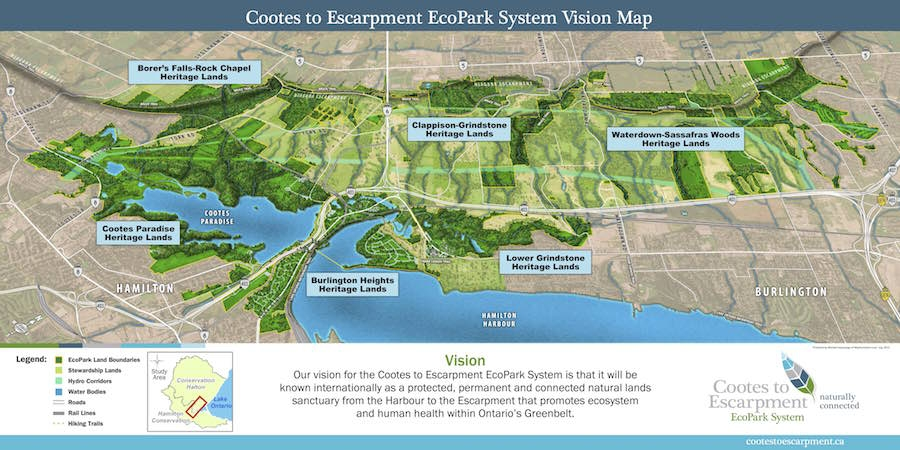It may be only a tiny piece of Aldershot history, but it’s kicking up a bit of a fuss.
City of Burlington staff have decided that a nearly century-old plaque in LaSalle Park should be removed, in part because it has offended a member of the public.
The plaque celebrates the 1669 landing of René-Robert Cavalier, Sieur de La Salle, and refers to him as “The First White Man To Set Foot On These Shores.”
The city’s Heritage Advisory Committee, which met on October 14, 2020, has expressed some concern about the proposed removal. Members ultimately voted to ask the city to seek the opinion of its Inclusivity Advisory Committee before acting.
City Planner Danika Guppy told the Heritage Committee that staff reviewed the issue after receiving the complaint. They determined that the plaque should be removed, not only because of the complaint, but because it is situated on an isolated slope and is not very accessible to the public. She told the committee that she was sharing the information simply as an ‘FYI’ and added that there is another plaque in the park that tells more of La Salle’s story.
”I’m going to challenge that there’s any lack of inclusivity in this language,” said committee member Barry Duffy. “There’s nothing wrong with that language. We probably wouldn’t write it that way today, I’ll acknowledge that, but we’re looking at 1923 and so they did express it differently, but that is not pejorative language in any way. The fact that we would say things differently a hundred years ago is in fact part of our heritage and that’s what this committee is here to preserve.”
Duffy would say later, “You can’t change your past. You shouldn’t. It’s your history.*“
Committee member David Barker agreed. “I find this annoying. No one’s being harmed by it. I as a white person do not take offence.*”
[*Editor’s Note: At issue, of course, is neither offence or non-offence taken by white people nor that the plaque does indeed describe a historical event — from the point of view of white people. Rather, the issue is the erasure of the First Nations groups who lived in the area long before white people set foot on it.]
Committee member and Aldershot resident Don Thorpe joined others to suggest that the plaque remain in the park: “It’s a beautiful plaque.” He went on to suggest that perhaps it should be moved to a lower level pathway where more people could see it.
The plaque was installed in 1923 by the then-Wentworth Historical Society. At that time, the park was operated by the City of Hamilton, which still owns it, but today lets the City of Burlington operate it.
In a clarifying e-mail, City Planner Guppy explained, “The concern was raised regarding the language of the plaque, particularly its commemoration of the first white man to arrive on the shores. There are more inclusive ways to tell the story of the park, particularly considering that there is already a provincial plaque with more detail located on site.”
Not everyone agreed that the plaque should remain. Jenna Dobson said, “If someone made a public complaint, it obviously struck a chord.” She added that, “In my opinion, it needs to be taken down. It’s a huge historical debate right now. I think it would be hard to identify with the harm that could be caused by that language now.” She suggested that perhaps a message could be attached to the sign indicating that different language would be used today. She called it a “teaching moment.”
In the end, the Heritage Committee members agreed that their only job was to ensure the plaque, whatever its future, was not destroyed. They voted to ask staff to consult with the Burlington Inclusivity Advisory Committee before removing it and urged that it be safely stored.
Committee Chair Howard Bohan concluded the discussion, “We’ve got enough problems to deal with in heritage without taking this one on. We want to keep the plaque. Everything else — we back off.”
According to the Burlington history book From Pathway to Skyway Revisited, by Claire Emery Machan, “La Salle and the Sulpicians had been coming up the St. Lawrence and along the shore of Lake Ontario from the east. They had landed where La Salle Park is now and had proceeded north to the Indian village, located near the present village of Westover.”






